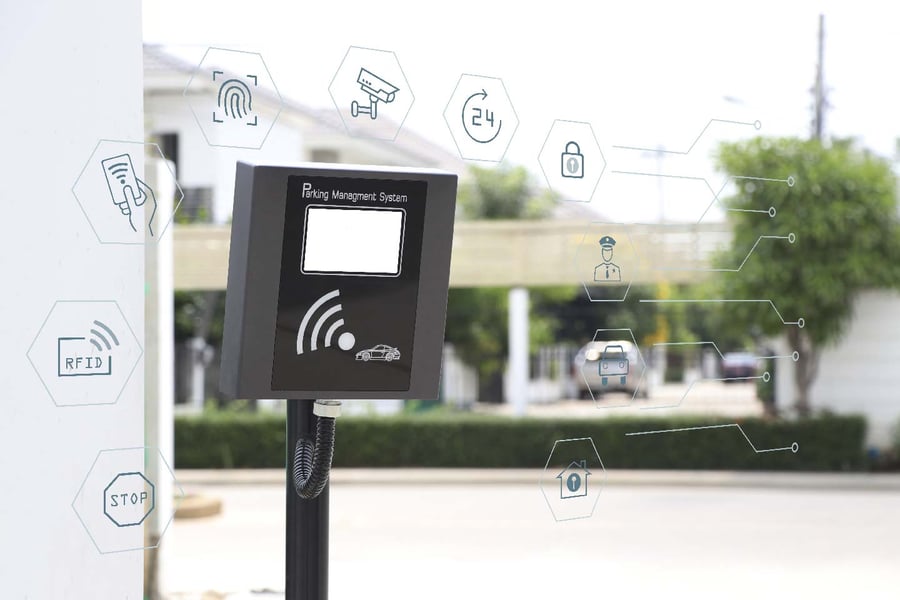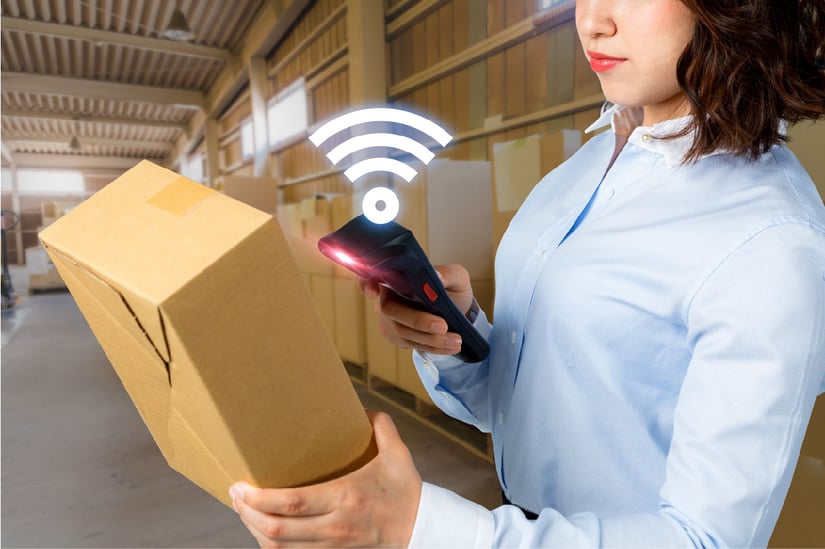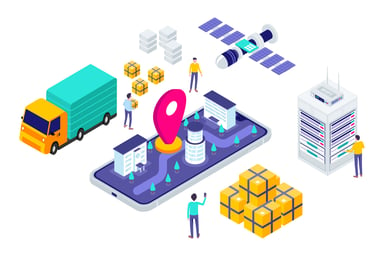New and advanced asset tracking technologies are replacing traditional asset tracking as they expand business scope through improved asset location and health monitoring
.jpg?width=825&name=3-01%20(4).jpg)
Asset tracking and management poses many problems for organizations in the absence of an efficient asset tracking technology and system. The time-consuming and laborious process of managing assets have caused irreparable damages such as, missing or misplaced assets, damaged goods, and items reaching untraceable locations.
Additionally, very little information is collected about assets even with a traditional asset tracking system in place. This restricts asset tracking visibility to the vendors and purchasers. There are also limitations to guard the items being shipped to ensure their sustainability in various conditions and in case of damages.
Especially for large and complex organizations, asset tracking solutions are a major driver for preventing losses through mishaps and increasing venues for better business. From the enormous success that asset tracking software brings to organizations that manage variable goods and items, its market has grown over the years. Primarily since the tracking IoT and connected devices solutions are replacing manual processes that were error prone and lacked other forms of traceability, they are gaining popularity in every organization for every shipping/movement and transaction.
The global Internet of Things (IoT) market is projected to grow from $2.99T in 2014 to $8.9T in 2020, attaining a 19.92% Compound Annual Growth Rate (CAGR) - Forbes
New technologies like RFID, advanced sensors and other IoT M2M (Machine to Machine) technologies provided new ways to communicate with tracking systems and log information in efficient ways surpassing earlier methods that were employed.
Inventory tracking vs asset tracking
Asset tracking could be easily confused with inventory tracking as they both involve tracking inventory. However, inventory tracking is restricted to tracking just the stock numbers and their availability for the customers’ demand.
But asset tracking tracks more than just stock numbers and availability in that it can assess the value that the items hold in terms of business value, and other extra information such as its status, location, ownership and associated documents.
New methods and technologies for asset tracking
 Asset tracking IoT systems use underlying health and location tracking technologies that are leveraged to improve their efficacy according to each need and use case. A lot has changed since manual entries and disadvantageous bar code analysis that took time and were hard to maintain and transfer from one party to the other. With the old methods proving to be a breeding ground for erroneous communication and fraudulent transactions, finding new ways to substitute them became necessary.
Asset tracking IoT systems use underlying health and location tracking technologies that are leveraged to improve their efficacy according to each need and use case. A lot has changed since manual entries and disadvantageous bar code analysis that took time and were hard to maintain and transfer from one party to the other. With the old methods proving to be a breeding ground for erroneous communication and fraudulent transactions, finding new ways to substitute them became necessary.
These new technologies are enabling tracking of high volume of data at high velocities. They can provide a wide range of information from the sensors that carry location information, shock and vibration information, read the embedded information on items, etc and transmit them across long distances.
Earlier when assets were transported, they could only gather information from manual maintenances at specific destinations where manual audits would be performed. This also proved to be highly costly since they had to pay for the staff as well as the additional maintenance irrespective of whether there was any damage to the items being transported. This necessitated the implementation of better technology that didn’t require manual scans, and that could report on asset location whether they were in transit across land and sea, or if they were inside the warehouses or manufacturing plants.
Tracking inside vs outside
There are two kinds of asset tracking depending on the location and business need. If the items are being transported outside facilities and to faraway locations, GPS and satellite technologies are employed. Otherwise, if assets are within campuses and manufacturing plants, warehouses, etc., we can employ trackers that are short-ranged, and low-powered.
Let’s explore some of these technologies in detail. Starting with those used from inside the facilities or their premises, these specific technologies are reliable at short distances in controlled environments:
RFID (Radio-frequency identification)
New solutions and IoT devices should enable trusted sharing of information across the board with timely tracking of resources from one location or zone inside the warehouse or production house to the other in a seamless manner. The devices that are powering the solutions should accurately track each commodity in the warehouse.
Hence, technologies like RFID makes the processes more reliable with reduced human errors instead of the antiquated Barcode technology. Even though both these technologies are still prevalent, they differ in their capabilities, and the former fares better in terms of reliability.
 RFID (Radio-frequency Identification) tags are used to receive and transmit radio signals from being attached to a commodity. As a form of AIDC (automatic identification and data capture), the signals that are emitted from these tags can give accurate information that can be automatically detected through readers about commodities. The information could be the location of the item, its status and the unique number associated with it.
RFID (Radio-frequency Identification) tags are used to receive and transmit radio signals from being attached to a commodity. As a form of AIDC (automatic identification and data capture), the signals that are emitted from these tags can give accurate information that can be automatically detected through readers about commodities. The information could be the location of the item, its status and the unique number associated with it.
The RFID tags do not need to be read in close proximity like the barcodes. They can be detected farther when they are near to a reader that will transmit the information to the receiver.
There are also passive and active RFID tags. The passive tags are activated only when the readers interpret the radio waves. The active tags are battery powered and can be read from larger distances.
However, there are many security regulations imposed on this technology, as it can easily be misused to give out sensitive information.
BLE (Bluetooth Low-Energy)
Bluetooth Low Energy wireless technology is used in asset tracking as a novel method that is faster than standard Bluetooth. BLE beacons can replace other technologies that drains the batteries but they are limited to short-range tracking. It consumes very less power for low-energy devices like those used for transportation of assets across long distances.
BLE is compatible with most devices like smartphones and tablets, and they can be utilized through beacons set-up at a facility or in transport vehicles. These beacons are BLE-readers that are sensitive to the devices that are attached to the assets or the janitors with their BLE enabled smartphones.
This technology is also the easiest to implement with low-budget implementations that can utilize already existing devices like personal smartphones. They also do not need to scan items individually as the beacons can traverse an entire zone for assets. Similar to RFID tags, these tracking devices can collect information regarding the past locations, interactions, statuses and other structural information of assets, as opposed to traditional methods.
NFC (Near-Field Communication)
NFC is another rising technology that is companies use for tracking assets that need more secure readings at a high frequency. NFCs are prevalent in mobile payment apps, to make near field transactions. However, they can also be applied to asset tracking in high security. Since they can sense signals only at a length of a few inches, they are used for highly accurate, easily employable sensing of items.
The NFC technology can be used within the warehouses for ticketing, secure log ins, asset identification, location service during transit, automated asset tracking and many others. They are again, capable of reading variety of information, most accurately.
 As more and more solutions are evolving that are using these technologies either in combinations, they increase in their effectiveness for particular needs. Combining Wi-Fi with GPS or BLE with Geo-fencing can add different elements to asset tracking rather than using them alone.
As more and more solutions are evolving that are using these technologies either in combinations, they increase in their effectiveness for particular needs. Combining Wi-Fi with GPS or BLE with Geo-fencing can add different elements to asset tracking rather than using them alone.
Now, let’s look at the technologies used outside of specific locales such as warehouses or building premises. These can be used when assets are carried through very long distances.
GPS tracking devices
GPS serves long range communications for those commodities that are moved through various untraceable locations such as the ocean or remote localities. They may also reach several locations before reaching the final destination. In such cases, it is very useful when the GPS devices attached to trucks or cargo ships shares the location of pallets or items as they reach the various locations.
Vendors as well as buyers can have improved visibility into their products transportation statuses. With additional sensors, they can also relay information about the object’s condition. Such telemetric data are always leveraged to take the right decisions on auditing, checking and ensuring the quality of products as they are delivered.
This does not apply just to the finished goods transportation but also raw materials and inventory from one place to another. If the raw materials have to be tracked through the assembly line or manufacturing line, they are attached with devices that trace the progress through different ‘zones’. The zones help the monitoring and determination of asset statuses.
Satellite
Satellite communication can be leveraged to provide location information and other status information for items that are shipped through remote areas and ocean surfaces where GPS is found to be ineffective. It requires special expertise and integration with devices and is therefore slow to implementation. Satellite IoT devices are usually retrofitted inside large ships or containers inside trucks to provide this tracking facility.
This is usually a costly manoeuvre with integrations from various satellite providers, and are only used in cases of very large transportation through long distances and across borders.
Many a times, asset tracking involves more than just one of these IoT technologies. The organizations that use asset tracking to keep track of their utilities, assets and products find that they recover lost revenue. It becomes easy for the vendors to manage their products state during transport without additional costs on damages, prevent theft and expand their delivery landscapes to further locations.
Real-time asset tracking with Innominds
 A real-time asset monitoring and tracking system was built for one of our clients to effectively track their assets across borders. This large logistics and shipment company said goodbye to their old and pre-dated asset logging mechanics and implemented modern asset tracking through GPS and cellular communication devices.
A real-time asset monitoring and tracking system was built for one of our clients to effectively track their assets across borders. This large logistics and shipment company said goodbye to their old and pre-dated asset logging mechanics and implemented modern asset tracking through GPS and cellular communication devices.
The client could track assets through their web and mobile applications (iOS and Android), with simplified set-up that would get them started on using the different features and functionalities of the app. This allowed for the monitoring and management of varied assets with support to popular maps services.
The key features of the asset tracking system include:
- Support for multiple assets, such as SMS and email notifications
- iOS, Android based mobile application with maps services
- Real-time GPS location tracking
- Real-time traffic monitoring
- Low battery consumption and the capability to put the device in power saving mode
- Detecting asset tampering with sensors
The devices could be fitted onto assets in varying sizes and dimensions. According to the characteristics of power consumption, the devices could be installed on smaller assets and large containers. The Geo-fencing capabilities could detect whether the assets are moving beyond a certain perimeter of restriction.
The asset tracking system provided a concrete analysis of their asset tracking capabilities, resulting in saving costs and additional resource allocation for monitoring and maintenance. The time spent in manual audits was saved tremendously, as the devices could be managed from long distances and actions were taken only in case of critical need.
As asset tracking becomes more advanced with IoT capabilities that were never before seen, it is the need of the hour for organizations to shift their current strategies to align with the latest and most modern developments.
To learn how modern IoT and asset tracking capabilities can help your organizations, check out our Remote-first and Geospatial solutions, as well as out Connected Devices and IoT services.
Want to know more? Write to us at marketing@innominds.com




